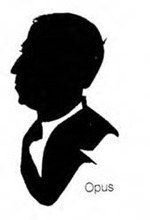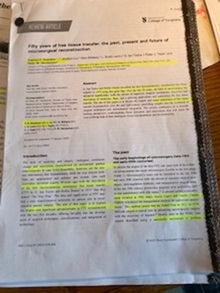2025 | Volume 26 | Issue 4

OP-XCIV
"Those who fail to learn from history are doomed to repeat it." George Santayana
"Study the past if you would define the future." Confucius
"We are not makers of history. We are made by history." Martin Luther King Jr.
A recent publication from the ANZ Journal of Surgery (below) by Frances Graziano from New York, is an excellent overview of microsurgical history.

Recalling pearls from history, Voltaire escaped the French Revolution of 1789, went across to England. There he met Isaac Newton and being bilingual translated his textbook Principia and facilitated the spread of Newton’s philosophy on mathematics internationally by the written word.
This microsurgical historical article synopsises the events from Ian Taylor and Rollin Daniel’s work of a vascularised free tissue transfer in 1973 using the groin flap. Graziano includes the work of Dr Alexis Carrel’s from 1902 including his triangulation method of anastomosis, earning him the Nobel Prize in 1912. The list concludes with the 2015 Levin article on paediatric hand transplantation.
Julius H Jacobson II was the first microvascular surgeon to coin the term microsurgery and this has become an annual award at the American College meetings.
In 1916 Jay McLean played a crucial role in the advancement in microsurgery with the discovery of Heparin before Carl Zeiss’ monocular microscope contributed to the ongoing success.
Joseph Murray in 1954 was awarded the Nobel Prize (1990) for a sibling donation of a kidney transplant in an identical twin brother.
Applications of microsurgery with replantation of amputated limbs are all noted and Malt and McKhann performed the first successful arm replantation in a 12 year old male. In 1963 Chen published the first replantation of an amputated hand at the level of the distal forearm.
The scope of microsurgery advanced significantly with the development of the free flap technique, driven by progress in animal experimental models. A major contributor to this progress was the Bernard O’Brien Institute, which I visited in the early 1970s with my London mentor, Charlie Westbury. He remarked that this animal lab was the most advanced in the world that he had ever seen.
Also, on the American side, Harry J Buncke was considered the founding father of microsurgery for his published microsurgical techniques.
In 1965 R. J. Krizek reported the first transfer of an abdominal wall using the superficial epigastric artery attached to the carotid artery in a dog. I remember attending the lecture with Mark Ashton that evening at The Austin Hospital at the start of his plastic surgical career. He has since become Head of Unit at the Royal Melbourne Hospital—a mecca for microsurgery then—before becoming a prominent member of the RACS College council where he now sits.
Shortly after the Ian Taylor success in 1973, performing the world's first free flap on a patient, then free muscle transfer was described in China. This makes me recall the Chinese expertise in the use of fish bones and silk threads to create their beautiful embroideries, which we often see on the Antique Roadshow, valued in the thousands. The Chinese were some of the first to do microsurgical procedures—even with delayed publication—because of their aptitude in fine needle work. They have also claimed originality but were waiting for numbers to publish.
I was totally unaware of Alexis Carrel’s work and his triangulation technique (above).
The triangulation method of microanastamosis established by Carrel - the Graziano article from the RACS ANZ Journal of Surgery.
Carrel was an admirer of the French lace makers from Lille’s expertise and their use of fine threads and needles in their silk embroidery work where he visited them.
Thanks to Professor Anthony Emmett, a protégé of John Barron from Odstock Hospital Salisbury, where these events are summarised in his book Anecdotal History of Plastic Surgery soon to be placed in the Cowlishaw collection. The first facial transplantation of 2005 is mentioned but other cases have been inadvertently or editorially overlooked and warrants correction.
Anthony Emmett (Tony) gave me his own copy of Carrel’s Man the Unknown now that he is retired.
In summary, Carrel’s book includes aspects of eugenics and euthanasia losing favour with the medical establishment in Paris. In the history of Naziism, eugenics features strongly.
In conclusion, I have never done a microsurgical course but growing up with Professor Robert Shannon in Brisbane who taught me about DeBakey’s methods of vascular anastomosis and how to tease the adventitia off the sides of the vessels to save the sutures catching. This has been my godsend in my microsurgical career using loupes.
Reference
1. Francis D. Graziano et al, Fifty years of free tissue transfer: the past, present and future of microsurgical reconstruction. ANZ Journal of Surgery 95 (2025) 878-885


